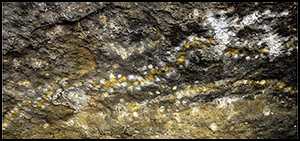Article contents
Beswick Creek Cave six decades later: change and continuity in the rock art of Doria Gudaluk
Published online by Cambridge University Press: 21 November 2016
Abstract

The rock art of Doria Gudaluk (Beswick Creek Cave) in the Northern Territory of Australia has previously provided a valuable lesson in the difficulties of definitive interpretation without local knowledge. Now, newly recorded motifs at the site—some only visible with digital enhancement—highlight the dangers of relating stylistic changes to the replacement of different cultures. When considered in the context of local history, developments in the rock art of Doria Gudaluk during the second half of the twentieth century can be understood as the result of new cultural collaborations between incoming groups and older, local communities.
- Type
- Research
- Information
- Copyright
- Copyright © Antiquity Publications Ltd, 2016
References
- 10
- Cited by


